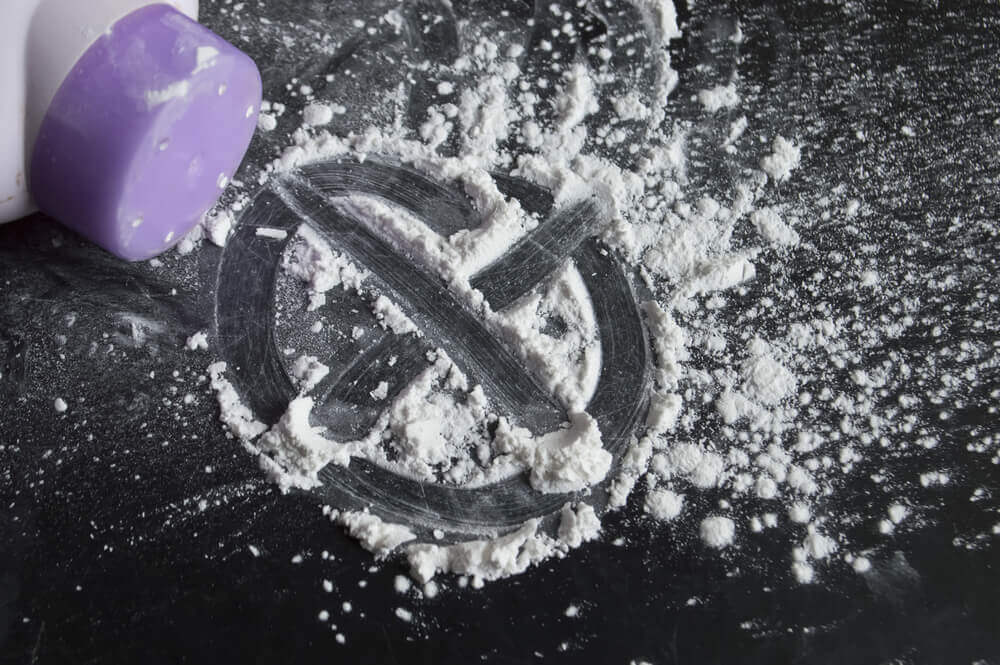The product that can harm you most might be one that you’d least expect. Talcum powder (which contains talc) currently faces several thousand lawsuits from women who developed ovarian cancer. While the substance seems innocuous, talc is a mineral that forms naturally in the earth next to asbestos, a well-known carcinogen. Though asbestos contamination rarely occurs, many women risk developing talcum powder cancer after years of routine feminine hygiene use.
What’s In Talcum Powder?
Talcum powder’s active ingredient is talc, which also contains minerals like silicon and magnesium. Manufacturers mine talc in mineral form directly from the earth. Pure talc is quite soft and comes out looking gray, green or brown before processing. Most talc deposits occur in metamorphic rock formations along convergent plate boundaries. Once mined, talc becomes a key ingredient in many cosmetics and household products. Because talc is so soft, you can apply it directly to your skin and then wash it right off again.
Related: Talc-Free Makeup Brands: We List Our Top 10 Favorites
How Talcum Powder Works
“Baby powder” might be a misnomer, as women use it on themselves as much as they do on babies. Talcum powder keeps the skin dry and rash-free. Talc works by absorbing moisture and eliminating friction, which is why is such a popular product on so many areas of the body. It’s especially useful when the weather is hot, and sweat and humidity cause unwanted chafing.
Nearly 40% of women regularly use baby powder to stay fresh and dry throughout the day. The product has always been marketed for genital hygiene as a part of staying fresh. When applied to the genital region, baby powder is able to travel up the vagina, into the uterus, through the fallopian tubes, and into the ovaries. This is where it causes issues; in fact, many biopsies performed on ovarian tumors have produced talc traces. One British study found the substance in 10 out of 13 samples—a strikingly high number.
How Talcum Powder Cancer Occurs
According to The Guardian, women who use talcum powder for genital hygiene have a 20%-30% greater risk of developing ovarian cancer. Numerous studies have been conducted since the 1970s, all of which have found potential links between ovarian cancer and talcum powder usage. No direct causal connection has been determined for sure; however, talcum powder manufacturers (including Johnson & Johnson) do not have to put a disclaimer on their products.
A causal connection between talcum powder use and ovarian cancer is now coming together in America’s courts. The World Health Organization lists it as a possible carcinogen. The first lawsuit against Johnson & Johnson for talcum powder cancer was launched in 2013. Since then, more than 30 plaintiffs have won multimillion-dollar cancer settlements. In addition, J&J decided to halt talcum powder sales in the U.S. altogether in May of 2020 after an asbestos contamination recall in late 2019.
Related: Top 10 Talc-Free Baby and Body Powder Products
How Victims Can Get Justice and Compensation
If you or someone you know developed talcum powder cancer, you may qualify for a cash settlement. It’s a good idea to first speak with an experienced talcum powder cancer lawyer about your case. To see if you may have an eligible claim, fill out your free talc case evaluation form today. Once you’ve submitted your information, an advocate will contact you to discuss your case and possible compensation options.
Related: Does Baby Powder Cause Cancer? Learn What 40 Years of Studies Say
Jared Heath
Jared Heath is the author of The Sound in the Silence. In his role as an SEO content and digital marketing strategist, Jared was directly responsible for managing DrugJustice.com's editorial calendar and published articles on this website from 2015 to 2016. He is now pursuing a new career as a chiropractor.

